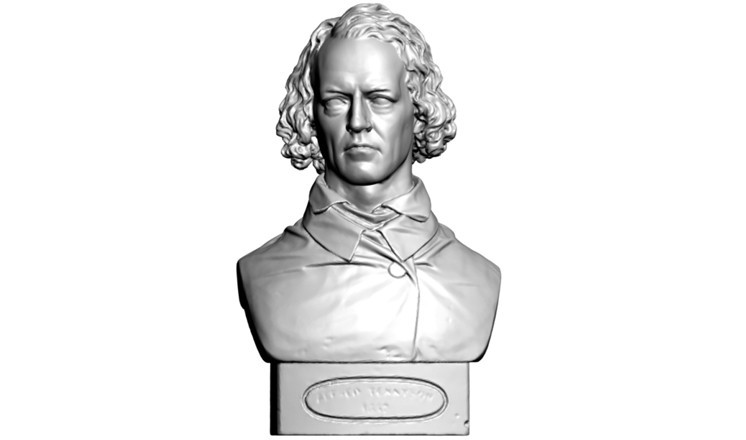3D Scanning this January 2014
RSS FeedSo far this month, I have completed several scans over at The Usher Gallery
From late 2013, we found out about certain qualities the 3D scanning technology tends to work best with. In our case marble sculptures have these qualities. The scanner works quickly along the smooth stone surface better than any wood, fabric, or textural surface. Therefore, to start 2014's scanning, I began with a large marble sculpture over at the Usher Gallery upstairs in the top right hand blue gallery space (5). This romantic sculpture displayed in the centre of the room is Venus Kissing Cupid. Writing on the sculpture marks the details of its property and origin. Venus Kissing Cupid is similar in style to several other sculptures displayed at The Usher Gallery. Including Venus Chiding Cupid, another scan I completed that same day.
You can see a majority of these scans now available on the project's website, http://lincoln3dscans.co.uk/
These larger artworks have been a real success in regards to this project. This has then led me to scanning my most ambitious scan yet, The Prodigal Son another marble sculpture depicting the biblical story. You can find The Prodigal Son at the foot of the stairs on the lower floor of The Usher Gallery. I found this scan quite hard due to the height and amount of detail that has gone into the sculpture, as the scanner struggles to project light in to these tiny crevices. However, the overall outcome of the scan was successful. Continuing on from these scans, I have worked with two Tennyson busts, one marble and the other plaster. Both of these busts are in a remarkable condition and are kept in storage at The Collection. Alfred, Lord Tennyson is renowned for being a famous poet, born locally to Lincoln. These two busts pay homage to Tennyson and to the area of Lincolnshire and they give me great pride to add them to collection of scans I have completed so far on this project.
About Tennyson
Alfred Tennyson (1809-1892), regarded as the chief representative of the Victorian age in poetry. Tennyson succeeded Wordsworth as Poet Laureate in 1850. Tennyson was born on August 5, 1809 in Somersby, Lincolnshire. His father, George Clayton Tennyson, a clergyman and rector, suffered from depression and was notoriously absentminded. Alfred began to write poetry at an early age in the style of Lord Byron. After spending four unhappy years in school he was tutored at home. Tennyson then studied at Trinity College, Cambridge, where he joined the literary club 'The Apostles' and met Arthur Hallam, who became his closest friend. Tennyson published Poems, Chiefly Lyrical, in 1830, which included the popular "Mariana".
For more information on Tennyson and his life please click HERE to visit the Tennyson Research Centre Website.
Thursday 16th January was my first scan of a person. This was both a trial and an experiment, scanning a member of staff at The Collection was extremely difficult but rewarding to see. The scan took place in the morning and had taken around just under an hour to finish. There were a few areas the scanner struggled with this was for instance, the hair and the clothes. But there was a definite figure at the end of the scan. I am extremely excited to see whether this scan will make it on to the website. All safety precautions were taken when scanning as the laser beam can be damaging to the eye.
For more information on these sculptures and works of art, please visit the online archive available at http://www.lincstothepast.com/
By Laura Ince
3D Scanning Intern
Comments
thankyou! You did an awesome job on scanning these masterpieces 😉
Artist
